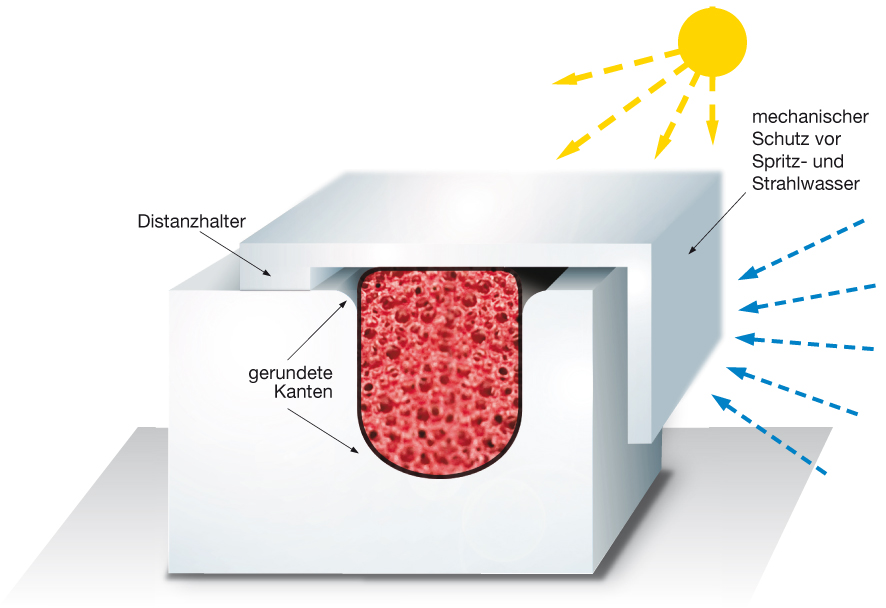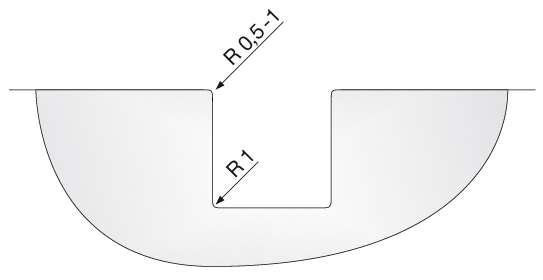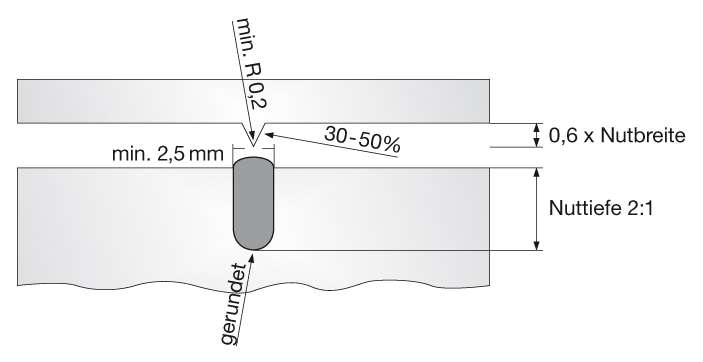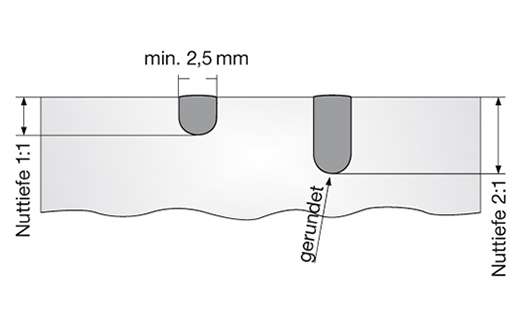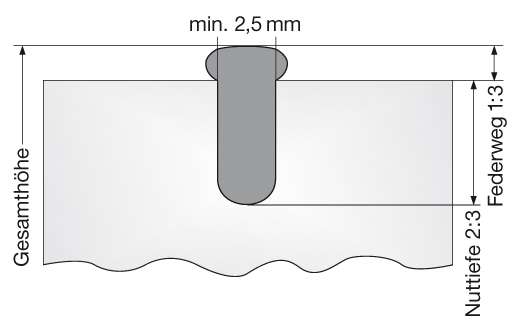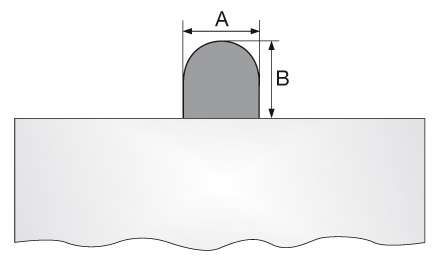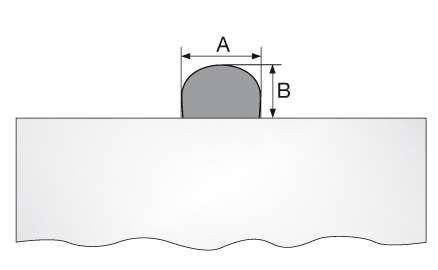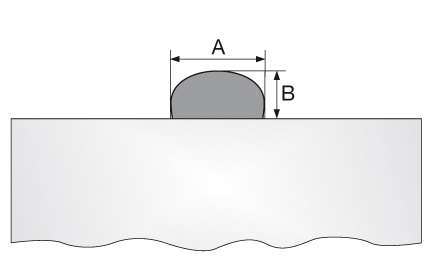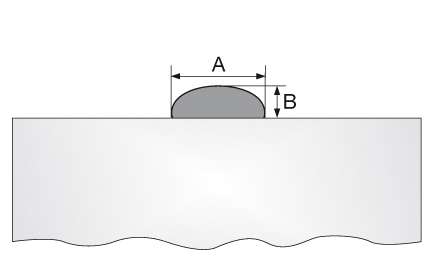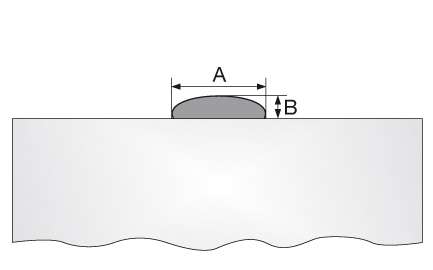Notch shapes
This section contains design guidelines and recommendations on notch design (optimum design and negative examples), and recommendations on applying seals to even surfaces with dual-component systems.
This section contains design guidelines and recommendations on notch design (optimum design and negative examples), and recommendations on applying seals to even surfaces with dual-component systems.
Optimum
Optimum design of notch geometry for application of liquid sealing components
Negative
Negative examples of notch design to avoid air pockets










A Avoid corners – Better: RADII
B Avoid recessed notch cross-sections if possible
C Notch widths> 3 mm no problems
< 3 mm problems(special nozzles, production losses)
D Notch depth: not too large for small notch widths
e.g.: W=3 / D=3 (special nozzles, production losses)
Seal application on even surfaces
1. Difficult to implement, only possible with ultra-thixotropic material and special application equipment.
2. For markedly 3-dimensional or overhead application up to an angle of 70°.
3. Only just possible with liquid material.








